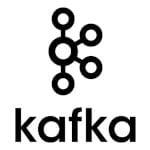Exploring Storage Types in Cloud Computing Platforms
In cloud computing, storage plays a pivotal role in shaping the efficiency, scalability, and performance of digital infrastructures. As organizations migrate their operations to the cloud, understanding the diverse array of storage types available becomes paramount. Each storage option comes with its unique features, benefits, and use cases, catering to a wide range of requirements and workloads. In this article, we delve into the various storage types used on cloud computing platforms, offering insights into their functionalities.
1. Object Storage
Object storage is a fundamental storage type in cloud computing, designed to store and manage unstructured data as objects within a flat address space. Unlike traditional file systems, which organize data in a hierarchical structure, object storage stores data with unique identifiers and metadata.
This approach facilitates seamless scalability and enables efficient data retrieval and distribution across distributed systems. Prominent examples of object storage services include Amazon S3, Google Cloud Storage, and Azure Blob Storage.
- Use Cases: Object storage is ideal for storing large volumes of unstructured data such as multimedia files, backups, logs, and archives. It finds extensive applications in content delivery, data lakes, backup and recovery, and cloud-native development.
2. Block Storage
Block storage operates at the raw storage device level, providing storage volumes that can be attached to virtual machines (VMs) as block devices. Unlike object storage, which manages data as discrete objects, block storage treats data as fixed-size blocks with unique identifiers.
This storage type offers high-performance, low-latency access, making it suitable for transactional workloads and databases that require direct disk access. Leading block storage offerings include Amazon EBS, Azure Disk Storage, and Google Persistent Disk.
- Use Cases: Block storage is well-suited for databases, enterprise applications, virtual machines, and high-performance computing (HPC) workloads that demand low-latency storage with consistent performance.
3. File Storage
File storage provides shared access to files and directories over a network, allowing multiple users or systems to access and modify data concurrently. It employs network-attached storage (NAS) or distributed file systems to facilitate file-level access, making it an ideal choice for collaborative workflows and applications that rely on shared file systems.
Major cloud providers offer file storage services such as Amazon EFS, Azure Files, and Google Cloud Filestore.
- Use Cases: File storage is commonly used for home directories, shared file repositories, content management systems, and applications requiring shared access to files across multiple instances.
4. Content Delivery Network (CDN)
A Content Delivery Network (CDN) is a distributed network of servers strategically deployed across multiple geographic locations to deliver content to end-users with high performance and low latency. CDNs cache static content like images, videos, and web pages at edge locations closer to end-users, reducing the load on origin servers and improving the overall user experience.
Cloud providers offer CDN services integrated with their storage offerings, such as Amazon CloudFront, Azure CDN, and Google Cloud CDN.
- Use Cases: CDNs are used to accelerate content delivery, enhance website performance, and mitigate the impact of traffic spikes by distributing content closer to end-users, thereby reducing latency and improving scalability.
5. Database Storage
Database storage solutions cater specifically to the storage needs of relational and non-relational databases, providing high-performance, scalable storage for storing and accessing structured data. These solutions often include features like automated backups, replication, and encryption to ensure data durability, availability, and security.
Cloud providers offer managed database services with integrated storage solutions, such as Amazon RDS, Azure SQL Database, and Google Cloud SQL.
- Use Cases: Database storage is essential for hosting transactional databases, data warehouses, analytics platforms, and real-time processing systems, providing reliable storage infrastructure for mission-critical business applications.
6. Choosing the Right Storage Type
Selecting the appropriate storage type is crucial for optimizing performance, cost, and scalability in cloud computing environments. Here are key considerations to help you make informed decisions:
- Data Characteristics: Analyze the nature of your data, including volume, structure, and access patterns. Unstructured data may benefit from object storage, while structured data may require block or file storage.
- Performance Requirements: Assess the performance needs of your workloads. Block storage offers high-performance, low-latency access, ideal for databases and transactional applications. Object storage provides scalability for large-scale data processing.
- Cost Efficiency: Evaluate the cost implications of different storage options, considering factors such as storage capacity, data transfer, and access frequency. Choose storage tiers that align with your budget and usage patterns.
- Scalability and Flexibility: Consider the scalability capabilities of each storage type to accommodate future growth and fluctuations in demand. There are some hybrid storage solutions that offer flexibility by combining the benefits of multiple storage types.
- Integration and Ecosystem: Assess how storage solutions integrate with your existing infrastructure, applications, and cloud provider ecosystem. Ensure compatibility and interoperability to streamline data management processes.
By carefully evaluating these factors and aligning storage choices with your specific requirements and objectives, you can optimize your cloud computing storage infrastructure for efficiency, performance, and cost-effectiveness.
7. Conclusion
The landscape of storage types in cloud computing is diverse and constantly evolving to meet the evolving needs of modern businesses. From object storage for unstructured data to specialized solutions for archival storage, cloud providers offer a wide range of storage options to address various use cases and workloads.
By understanding the characteristics, strengths, and use cases of different storage types, organizations can architect robust storage strategies that optimize performance, scalability, and cost-effectiveness in the cloud.




